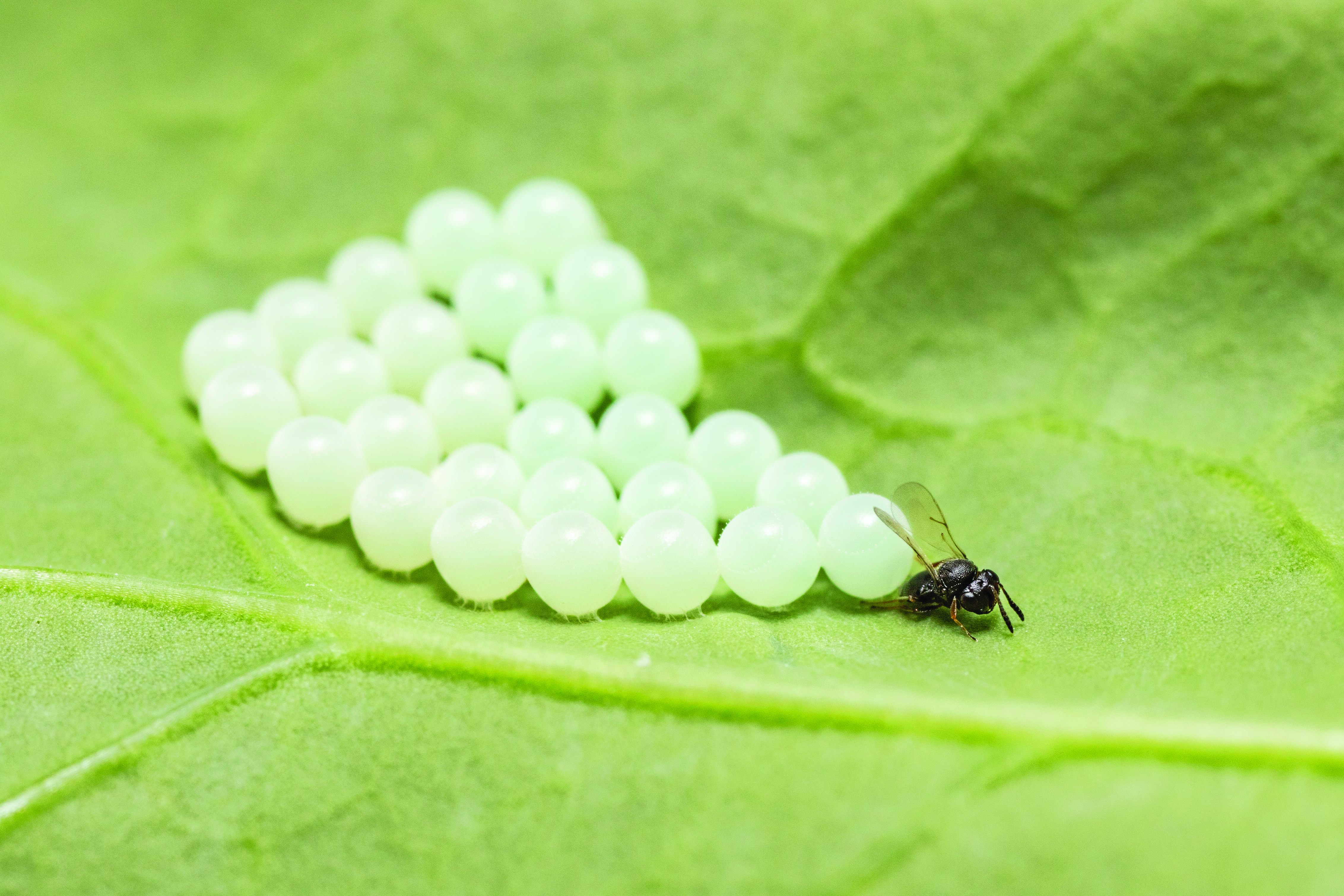A study looking at the parasitization of the eggs in a newly introduced species, the brown marmorated stink bug (Halyomorpha halys) has revealed a surprise. At a local site in Chilliwack, 100 per cent of the stink bug eggs were parasitized by another invasive species: the samurai wasp (Trissolcus japonicus).
The introduction of new species to a region is nothing new, and new species in an area can cause highly disruptive effects on the local ecosystem and human activities. The brown marmorated stink bug is native to China, Korea, Taiwan, and Japan, but has since spread to several areas of Europe and North America as an invasive species, including British Columbia.
The samurai wasp is native to the same regions as the brown marmorated stink bug and is a natural enemy of that species. It too has spread well beyond its home range, but in doing so, it can mitigate the spread and the effects of the stink bug by reducing their populations by hijacking their eggs to produce wasps instead of stink bugs.
The marmorated stink bug is known to cause severe damage to agriculture. Dr. Paul Abram, a scientist with Agriculture and Agri-Food Canada, is part of an ongoing research project examining the stink bugs’ presence in B.C.
“H. halys was first detected in British Columbia only four years ago … severe economic damage to agriculture from H. halys often does not occur until several years (7-10 years) after initial establishment,” Abram said over email. “Once the damage starts, large losses measured in the tens of millions of dollars have been observed in tree fruits and nuts (e.g. hazelnuts) in the Northeastern U.S.A. and Europe.”
During 2017 and 2018, Abram and his fellow researchers placed 1,496 stink bug egg masses at field locations around coastal and interior B.C. to study the effect of local species of wasps in curbing the growth of the stink bug population, the results of which were published in an article in the Journal of Hymenoptera Research. According to the study, there are species of wasps native to B.C. that reproduce by parasitizing the eggs of other species, such as stink bugs. These wasps lay an egg inside the egg of a stink bug, which will ideally produce a wasp offspring instead of a stink bug. However, parasitization is not always successful, and the native wasps did not perform well, only managing to successfully parasitize the stink bugs eggs roughly 22.5 per cent of the time.
At one site in Chilliwack, however, 100 per cent of the stink bug eggs in a cluster of 28 eggs were successfully parasitized, of which 90 per cent produced wasp offspring. This was not the work of any of the local wasp species, but of the invasive samurai wasp.
Some regions have deliberately introduced the samurai wasp in areas where the brown marmorated stink bug has become established for this reason, including the American states of Oregon and Washington. The samurai wasps discovered in Chilliwack likely migrated from the latter state.
The Canadian Food Inspection Agency, which has jurisdiction over matters such as these, is considering making introductions of the wasp to Canada.
“This kind of situation where a biological control agent is detected during the evaluation process is unprecedented as far as I know, so I can’t predict what the decision will be or how it will be influenced by the detection,” Abram said.
According to Abram, the samurai wasp is not expected to pose any danger to vertebrates (such as humans) or plants. The samurai wasp is about the size of a sesame seed, and has no stinger, in its place having an ovipositor that it uses to lay its eggs within the eggs of other insects. So far, the presence of samurai wasps has been detected at only one site in Canada in only one year, so it is not yet possible to say for certain whether the samurai wasp has established itself locally.
“The anticipated ecological impact of T. japonicus, should it establish, is likely to be limited but nonetheless complex and worth trying to understand — ourselves and several other research groups will be studying this in the coming years,” Abram said.
Image: Warren Wong


